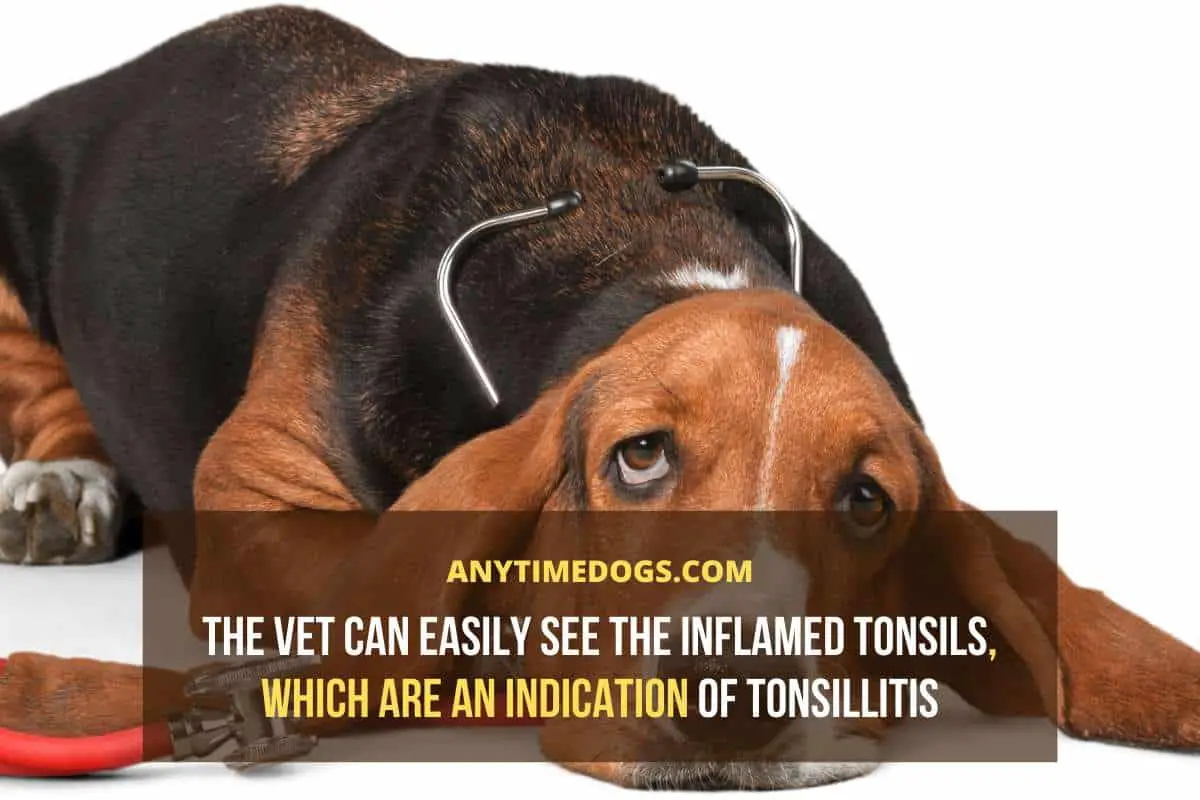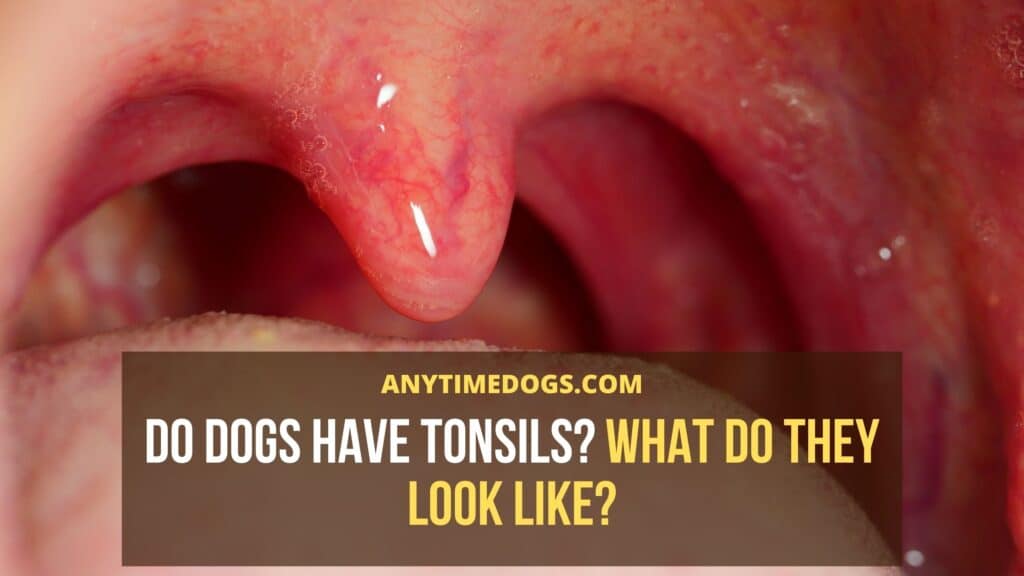The anatomy of some canines is somewhat similar to humans. It isn’t much alike but if you’re wondering, do dogs have tonsils?
Then yes, you are right. Like humans have tonsils as a part of their immune system. Dogs have them too. They have multiple functions in our body and so do in canines.
There are also chances of Tonsillitis. It is a disease related to tonsils in dogs. In this article, we shall find out all the information regarding tonsils in dogs.
Let’s dig deeper and find out!
What Do Tonsils Look Like In Dogs?
The location of tonsils in dogs is the back of their throats. They are in pairs and relates to the lymphatic system. They are also similar to the lymph nodes.

The tonsils are in the shape of small pouches or crypt. In the early days, people believed that tonsils have no function. After years of research, it proves that tonsils have an essential role in overall health.
If your pup’s tonsils carry infection, you can easily see them enlarged. The tonsils will bulge out of the crypts. They are visible at the back of their throat.
Functions Of Tonsils In Dogs
Though tonsils are small organs, they play a vital role in immune health. They help to fight infections. Since these are at the back of your throat. They prevent any germs from entering the lungs.
Tonsils have the capability of filtering out microorganisms such as bacteria and viruses. The set of these organs work as a goalkeeper in a soccer game.
The tonsils have multiple antibodies and white blood cells. They destroy the germs and keep your pooch’s body infection-free.
Like in humans, these small bumps act like the “first line of defense” in dogs. With the help of lymph, the tonsils flush out the harmful viruses and bacteria.
What is Tonsillitis In Dogs?
When the tonsils become infected, this condition is Tonsillitis. It typically happens in dogs when they have a disorder in the lungs or airways.

This disease is common in smaller breeds like Chihuahuas or pugs. In comparison, it can occur in some large breeds as well.
The disorder of Tonsillitis includes the nose, mouth, and upper throat. Along with continuous vomiting. All these conditions occur because of the enlarged esophagus. Sometimes, the enlarged tonsils have pus in them. They might look like small dots to you.
1) Causes Of Tonsillitis In Dogs:
Dogs love to spend their time outside in the sun. Their body is at exposure to external hazards continuously. Among these can be the foreign bodies that might attack your furry friend.
Here are a few reasons that your dog has caught the disease:
- Any infection
- Some foreign body, like plant fibers, is present in your dog’s mouth.
- Continuous coughing and vomiting
- Any dental disease. If your dog has dirty teeth, tartar builds up. It leads to inflammation of gums leading to tonsils.
- Tumors in the tonsil
- Any other disease in which multiplication of bacteria occurs.
Bacteria are the main reason behind Tonsillitis. During a bacterial infection, there are three types of bacteria found:
- Escherichia coli
- Staphylococcus aureus
- Hemolytic streptococci
2) Symptoms Of Tonsillitis In Dogs:
Enlarged tonsils can be very painful for your pup. Although there aren’t any significant signs at first but keep a check on the following symptoms:
- Coughing along with excretion of little mucus
- Gagging
- Poor appetite
- Listlenesses
- Problem in swallowing
- Licking lips
- Salivation
In some dogs, tonsils can be a chronic disease. It means that they might experience it frequently.
However, this condition occurs in dogs with a flattened face and short nose. Dogs with such an appearance are brachycephalic dogs.
If your pooch is younger, they may experience Tonsillitis. It may be due to the pharyngeal defense mechanism maturing.
How Is Tonsillitis Diagnosed In Dogs?
If you examine any of the above signs, take your pet to the vet. Your vet will physically examine your dog.
The next thing the vet will do is ask questions. They will collect information about what symptoms you saw. And, how long the symptoms have been there.

The vet can easily see the inflamed tonsils, which are an indication of Tonsillitis. Your doctor will discuss the further course of treatment. After examining the underlying cause.
How Is Tonsillitis Treated In Dogs?
Before the vet starts any treatment, they will examine the underlying problem. If the inflammation is due to obstruction in the throat, they will take out the object.
The next task they will do is prescribe an antibiotic. It will prevent your dog from further infections.
If your pooch’s dental and gum health is poor, you need to get their mouth and teeth clean. This will process also follows a course of antibiotics.
If it is due to bacterial infection, the vet won’t prescribe antibiotics initially. The first step will be a bacterial culture.
This test helps to identify which treatment is suitable for the disease. Because specific bacteria respond to particular antibiotics.
Tonsillectomy happens in rare cases. It is a surgical procedure in which they remove the dog’s tonsils. If there is a reoccurrence of inflammation and hinders airflow, only then it happens.
The tonsils are like lymph nodes. They help to fight infections and diseases. Therefore, the vets do not recommend this process.
How To Look After A Dog Recovering From Tonsillitis?
After your dog is in the state of recovery from Tonsillitis, they will struggle in swallowing. Hence, it would help if you gave them a soft diet. Keep them hydrated and provide them with plenty of fluids.

Naturally, the dogs recover from the diseases within 14 days. But, if surgery happens, your pooch would need extra care. In this condition, follow the instructions given by the vet.
Final Thoughts:
Being a dog owner is a great responsibility. Dogs don’t only need attention and love. One must take care of their health needs as well.
The naked eye easily sees the symptoms mentioned above. If your pooch is suffering from enlarged tonsils, you must make haste in visiting the vet.


I blog quite often and I genuinely thank you for your content. This great article has truly peaked my interest. I am going to bookmark your website and keep checking for new details about once per week. I subscribed to your RSS feed as well.
Thank you so much for your supported. Sure i will publish the helpful article more. 🙂